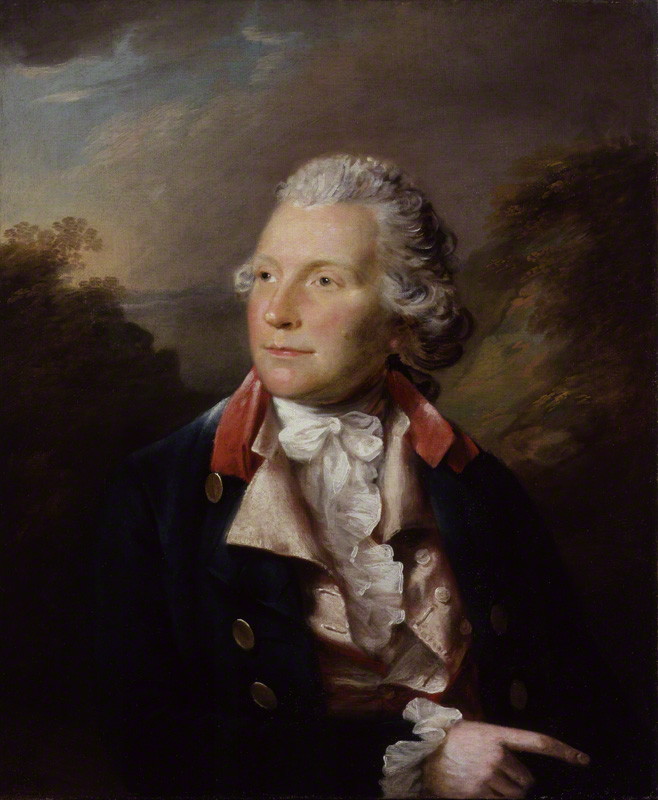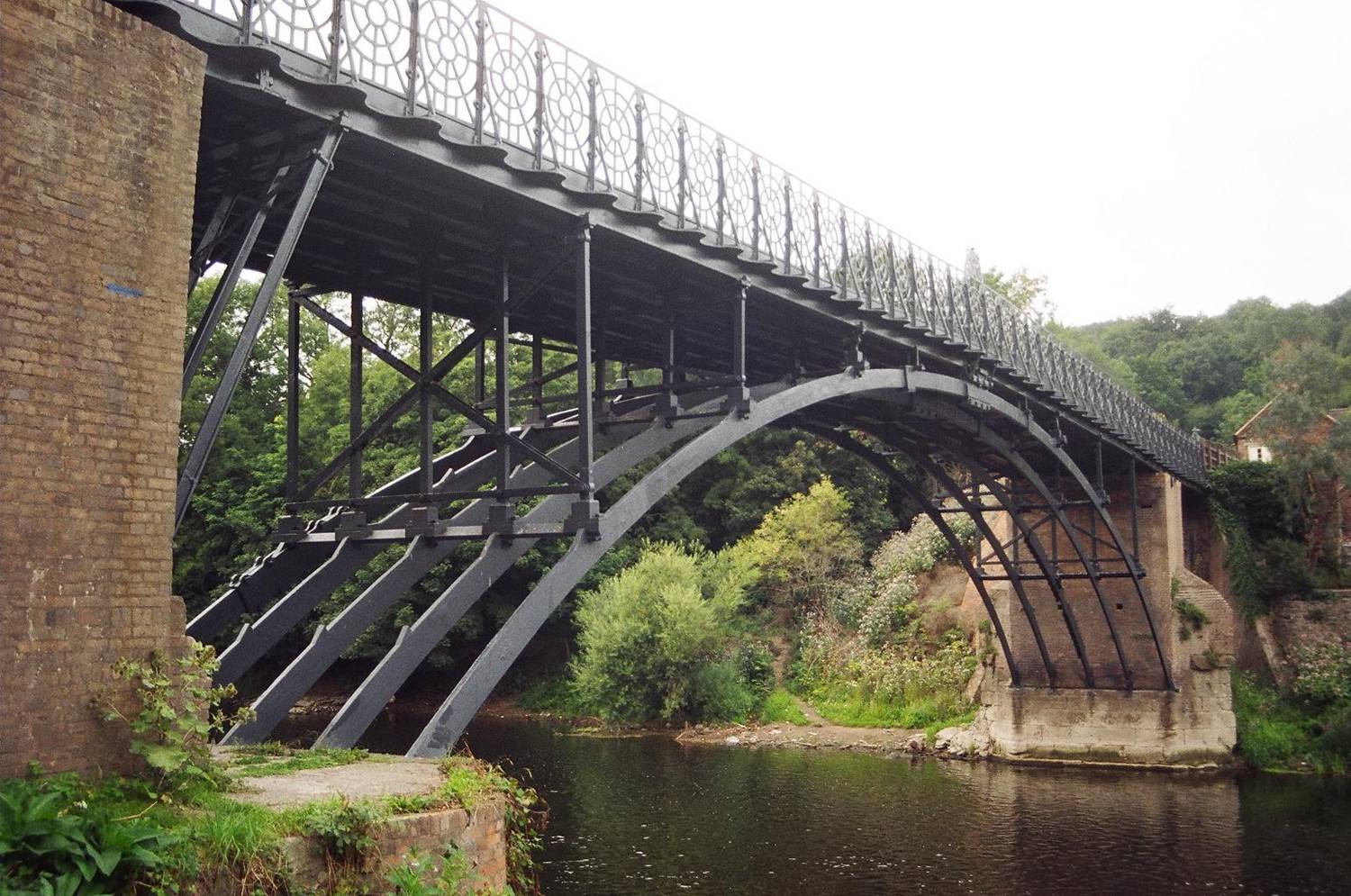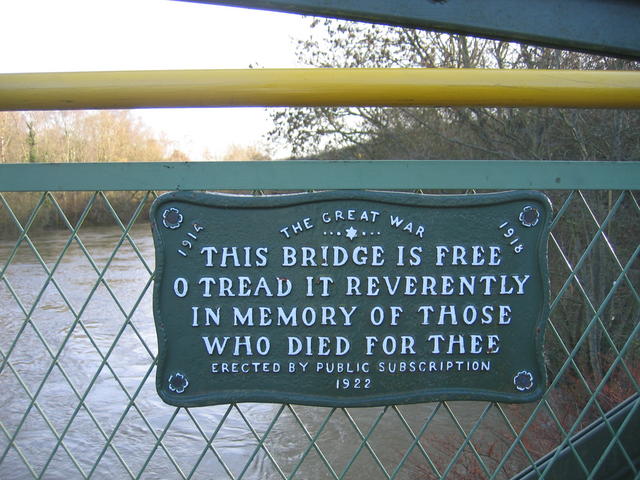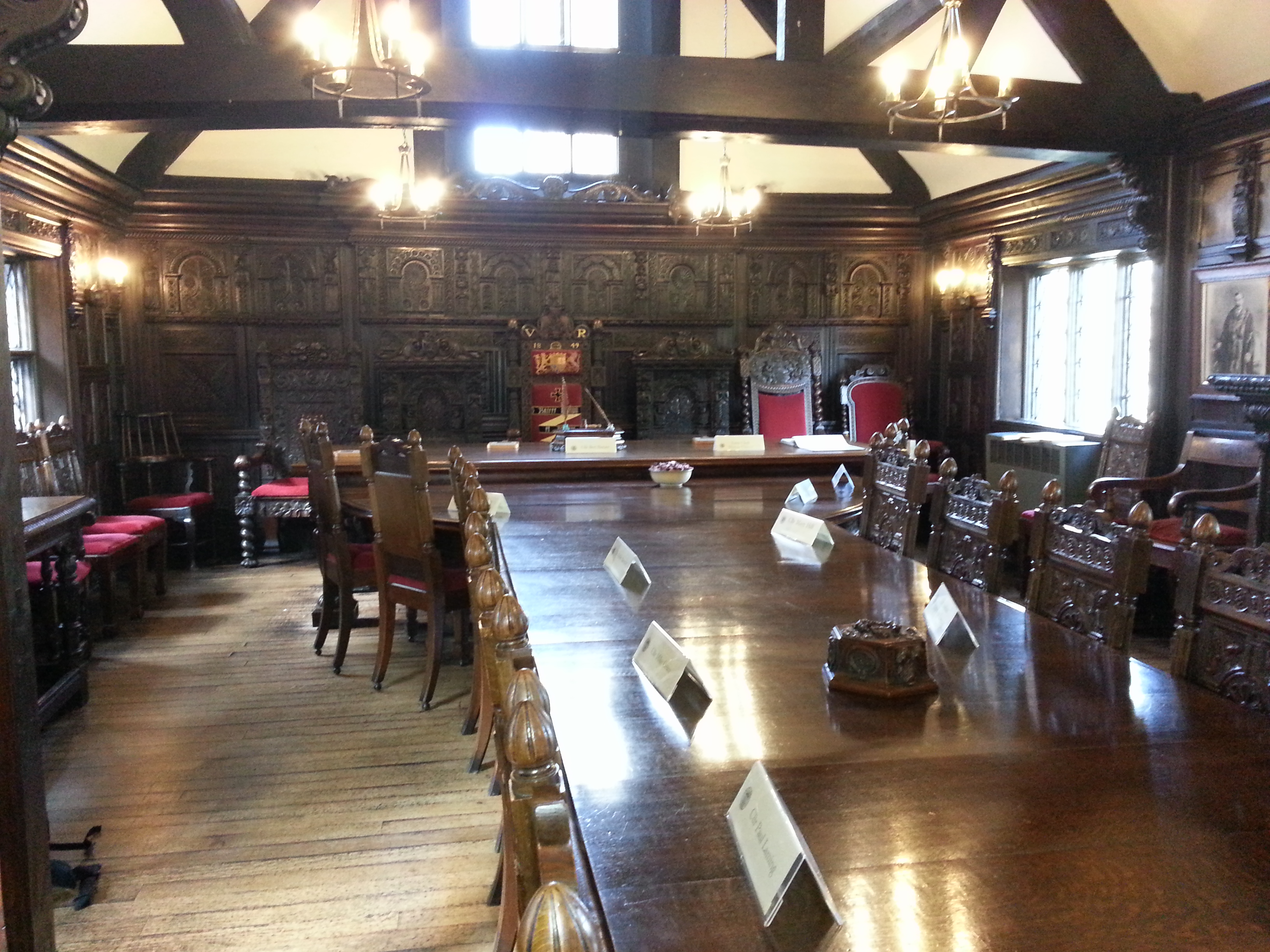|
Thomas Turner (potter)
Thomas Turner (1749 – February 1809) was an English potter. He was the lessee of the celebrated Salopian porcelain company, or Caughley manufactory, during the later decades of the 18th century. He is not to be confused with the potter John Turner (1737-1787) and his family, of Lane End, Staffordshire, who were active in the same period. Biography Turner was born in 1749, was the eldest son of Richard Turner (1724?–1791), vicar of Elmley Castle, Worcestershire, by his wife Sarah. Richard Turner (1753–1788) was his younger brother. It has been supposed that Thomas was brought up as a silversmith. He was, however, only formally apprenticed to his father, to qualify him for the freedom of the city of Worcester. It is probable that he was early connected with the Worcester china works. He was an excellent chemist, was a thorough master of the various processes connected with porcelain manufacture, was a skillful draughtsman, designer, and engraver, and was also a clever mus ... [...More Info...] [...Related Items...] OR: [Wikipedia] [Google] [Baidu] |
Thomas Turner By Lemuel Francis Abbott
Thomas may refer to: People * List of people with given name Thomas * Thomas (name) * Thomas (surname) * Saint Thomas (other) * Thomas Aquinas (1225–1274) Italian Dominican friar, philosopher, and Doctor of the Church * Thomas the Apostle * Thomas (bishop of the East Angles) (fl. 640s–650s), medieval Bishop of the East Angles * Thomas (Archdeacon of Barnstaple) (fl. 1203), Archdeacon of Barnstaple * Thomas, Count of Perche (1195–1217), Count of Perche * Thomas (bishop of Finland) (1248), first known Bishop of Finland * Thomas, Earl of Mar (1330–1377), 14th-century Earl, Aberdeen, Scotland Geography Places in the United States * Thomas, Illinois * Thomas, Indiana * Thomas, Oklahoma * Thomas, Oregon * Thomas, South Dakota * Thomas, Virginia * Thomas, Washington * Thomas, West Virginia * Thomas County (other) * Thomas Township (other) Elsewhere * Thomas Glacier (Greenland) Arts, entertainment, and media * ''Thomas'' (Burton novel) ... [...More Info...] [...Related Items...] OR: [Wikipedia] [Google] [Baidu] |
Bridgnorth
Bridgnorth is a town in Shropshire, England. The River Severn splits it into High Town and Low Town, the upper town on the right bank and the lower on the left bank of the River Severn. The population at the 2011 Census was 12,079. History Bridgnorth is named after a bridge over the River Severn, which was built further north than an earlier bridge at Quatford. The earliest historical reference to the town is in 895, when it is recorded that the Danes created a camp at ''Cwatbridge''; subsequently in 912, Æthelfleda constructed a mound on the west bank of the River Severn, or possibly on the site of Bridgnorth Castle, as part of an offensive against the Danes. Earliest names for Bridgnorth include Brigge, Brug and Bruges, all referring to its position on the Severn. After the Norman conquest, William I granted the manor of Bridgnorth to Roger de Montgomerie. The town itself was not created until 1101, when Robert of Bellême, 3rd Earl of Shrewsbury, the son of Ro ... [...More Info...] [...Related Items...] OR: [Wikipedia] [Google] [Baidu] |
1749 Births
Events January–March * January 3 ** Benning Wentworth issues the first of the New Hampshire Grants, leading to the establishment of Vermont. ** The first issue of ''Berlingske'', Denmark's oldest continually operating newspaper, is published. * January 21 – The Teatro Filarmonico, the main opera theater in Verona, Italy, is destroyed by fire. It is rebuilt in 1754. * February – The second part of John Cleland's erotic novel '' Fanny Hill'' (''Memoirs of a Woman of Pleasure'') is published in London. The author is released from debtors' prison in March. * February 28 – Henry Fielding's comic novel ''The History of Tom Jones, a Foundling'' is published in London. Also this year, Fielding becomes magistrate at Bow Street, and first enlists the help of the Bow Street Runners, an early police force (eight men at first). * March 6 – A "corpse riot" breaks out in Glasgow after a body disappears from a churchyard in the Gorbals district. ... [...More Info...] [...Related Items...] OR: [Wikipedia] [Google] [Baidu] |
Barrow, Shropshire
Barrow is a hamlet and civil parish in Shropshire, England, some 5 miles south of Telford between Ironbridge and Much Wenlock. Although Barrow itself consists of a church and just a few dwellings, the parish extends from Broseley to the eastern edge of Much Wenlock; it also includes the hamlet of Willey and Benthall. According to the 2001 census the parish had a population of 636, increasing at the 2011 Census to 680. Barrow is a short distance south of the site of a lost mediaeval village, Arlescott. The Jack Mytton Way runs through both Arlescott and Barrow. See also *Listed buildings in Barrow, Shropshire Barrow is a civil parish in Shropshire, England. It contains 28 listed buildings that are recorded in the National Heritage List for England. Of these, three are listed at Grade I, the highest of the three grades, three are at Grade&nbs ... Notes and references External links Villages in Shropshire Civil parishes in Shropshire {{Shropshire- ... [...More Info...] [...Related Items...] OR: [Wikipedia] [Google] [Baidu] |
Coalport
Coalport is a village in Shropshire, England. It is located on the River Severn in the Ironbridge Gorge, a mile downstream of Ironbridge. It lies predominantly on the north bank of the river; on the other side is Jackfield. The settlement was planned as a canal–river interchange and a complete "new town" by ironmaster William Reynolds, who between 1788 and 1796 built warehouses, workshops, factories and workers' accommodation in Coalport. He also directed the construction of the Shropshire Canal, linking the East Shropshire Coalfield with the River Severn — the terminus being Coalport Wharf between the Brewery Inn and Coalport Bridge. Coalport at this time was much larger than it is today. It forms part of the civil parish of the Gorge and is the southeastern corner of the borough of Telford and Wrekin. Cast iron bridge The Coalport Bridge of cast iron was built in 1818 and unlike its even more famous neighbour at Ironbridge, still takes vehicular traffic, albeit ... [...More Info...] [...Related Items...] OR: [Wikipedia] [Google] [Baidu] |
Longton, Staffordshire
Longton is one of the six towns which amalgamated to form the county borough of Stoke-on-Trent in 1910, along with Hanley, Tunstall, Fenton, Burslem and Stoke-upon-Trent. History Longton ('long village') was a market town in the parish of Stoke in the county of Staffordshire. The town still has a market housed in an attractively renovated market hall. Coal miners in the Hanley and Longton area ignited the 1842 general strike and associated Pottery Riots. In March 1865, Longton and Lane End were incorporated as the Borough of Longton. On 1 April 1910, the town was federated into the county borough of Stoke-on-Trent. Arnold Bennett referred to Longton as ''Longshaw'', one of the "five towns" featured in his novels set in the Staffordshire Potteries. Industry The district has a long history as a base for the pottery industry, such as Paragon China and Aynsley, and several major manufacturers still have a presence, along with Gladstone Pottery Museum. Roslyn Works, wh ... [...More Info...] [...Related Items...] OR: [Wikipedia] [Google] [Baidu] |
Willow Pattern
The Willow pattern is a distinctive and elaborate chinoiserie pattern used on ceramic tableware. It became popular at the end of the 18th century in England when, in its standard form, it was developed by English ceramic artists combining and adapting motifs inspired by fashionable hand-painted blue-and-white wares imported from China. Its creation occurred at a time when mass-production of decorative tableware, at Stoke-on-Trent and elsewhere, was already making use of engraved and printed glaze transfers, rather than hand-painting, for the application of ornament to standardized vessels ('' transfer ware''). Many different Chinese-inspired landscape patterns were at first produced in this way, both on bone china or porcellanous wares, and on white earthenware or pearlware. The Willow pattern became the most popular and persistent of them, and in various permutations has remained in production to the present day. Characteristically the background colour is white and the ima ... [...More Info...] [...Related Items...] OR: [Wikipedia] [Google] [Baidu] |
Coalport Porcelian
Coalport is a village in Shropshire, England. It is located on the River Severn in the Ironbridge Gorge, a mile downstream of Ironbridge. It lies predominantly on the north bank of the river; on the other side is Jackfield. The settlement was planned as a canal–river interchange and a complete "new town" by ironmaster William Reynolds, who between 1788 and 1796 built warehouses, workshops, factories and workers' accommodation in Coalport. He also directed the construction of the Shropshire Canal, linking the East Shropshire Coalfield with the River Severn — the terminus being Coalport Wharf between the Brewery Inn and Coalport Bridge. Coalport at this time was much larger than it is today. It forms part of the civil parish of the Gorge and is the southeastern corner of the borough of Telford and Wrekin. Cast iron bridge The Coalport Bridge of cast iron was built in 1818 and unlike its even more famous neighbour at Ironbridge, still takes vehicular traffic, albeit ... [...More Info...] [...Related Items...] OR: [Wikipedia] [Google] [Baidu] |
Josiah Spode
Josiah Spode (23 March 1733 – 18 August 1797) was an English potter and the founder of the English Spode pottery works which became famous for the high quality of its wares. He is often credited with the establishment of blue underglaze transfer printing in Staffordshire in 1781–84, and with the definition and introduction in c. 1789–91 of the improved formula for bone china (a form of soft-paste porcelain) which thereafter remained the standard for all English wares of this kind. Early life Josiah Spode was born in Lane Delph, Fenton, Staffordshire. Spode was a pauper's son and also a pauper's orphan at the age of six. In 1745 his elder sister Ann married Ambrose Gallimore, who in 1754 obtained the lease of the Caughley porcelain factory near Broseley. Spode was taken on as a worker by potter Thomas Whieldon in November (Martinmas) 1749, and remained with him until 1754. In that year, on 8 September, Josiah married Ellen Finley at Stoke on Trent, and his eldest son ... [...More Info...] [...Related Items...] OR: [Wikipedia] [Google] [Baidu] |
Ambrose Gallimore
Ambrose of Milan ( la, Aurelius Ambrosius; ), venerated as Saint Ambrose, ; lmo, Sant Ambroeus . was a theologian and statesman who served as Bishop of Milan from 374 to 397. He expressed himself prominently as a public figure, fiercely promoting the Christian faith against Arianism and paganism. He left a substantial collection of writings, of which the best known include the ethical commentary ''De officiis ministrorum'' (377–391), and the exegetical (386–390). His preachings, his actions and his literary works, in addition to his innovative musical hymnography, made him one of the most influential ecclesiastical figures of the 4th century. Ambrose was serving as the Roman governor of Aemilia-Liguria in Milan when he was unexpectedly made Bishop of Milan in 374 by popular acclamation. As bishop, he took a firm position against Arianism and attempted to mediate the conflict between the emperors Theodosius I and Magnus Maximus. Tradition credits Ambrose with developing a ... [...More Info...] [...Related Items...] OR: [Wikipedia] [Google] [Baidu] |
Much Wenlock
Much Wenlock is a market town and parish in Shropshire, England, situated on the A458 road between Shrewsbury and Bridgnorth. Nearby, to the northeast, is the Ironbridge Gorge, and the new town of Telford. The civil parish includes the villages of Homer (1 mile north of the town), Wyke (2 miles northeast), Atterley (2 miles southeast), Stretton Westwood (2 miles southwest) and Bourton (3 miles southwest). The population of the civil parish, according to the 2001 census, was 2,605, increasing to 2,877 at the 2011 Census. Notable historic attractions in the town are Wenlock Priory and the Guildhall. The Wenlock Olympian Games established by William Penny Brookes in 1850 are centred in the town. Brookes is credited as a founding father of the modern Olympic Games, and one of the London 2012 Summer Olympics mascots was named Wenlock after the town. Toponym Much Wenlock is historically the chief town of the ancient borough of Wenlock. "Much" was added to distinguish it fro ... [...More Info...] [...Related Items...] OR: [Wikipedia] [Google] [Baidu] |
Turner (potters)
The Turner family of Pottery, potters was active in Staffordshire, England 1756-1829. Their manufactures have been compared favourably with, and sometimes confused with, those of Josiah Wedgwood and Sons. Josiah Wedgwood was both a friend and a commercial rival of John Turner the elder, the first notable potter in the family. The Turner factory, like Wedgwood, mostly made fine earthenwares and stonewares but, briefly and not very successfully, made hard-paste porcelain themselves. John Turner the Elder was also an original partner in the New Hall porcelain factory, though not associated with the factory for long. Many of the most interesting wares from the Turner factory are unglazed, in caneware, jasperware and basalt ware. Geoffrey Godden uses the term "Turner stoneware" for "a refined earthenware being a cross between caneware and stoneware" (bearing in mind that many classify caneware as stoneware). The Turner factory was the leading and best maker, but many others also m ... [...More Info...] [...Related Items...] OR: [Wikipedia] [Google] [Baidu] |








%2C_by_N_Freese.jpg)


